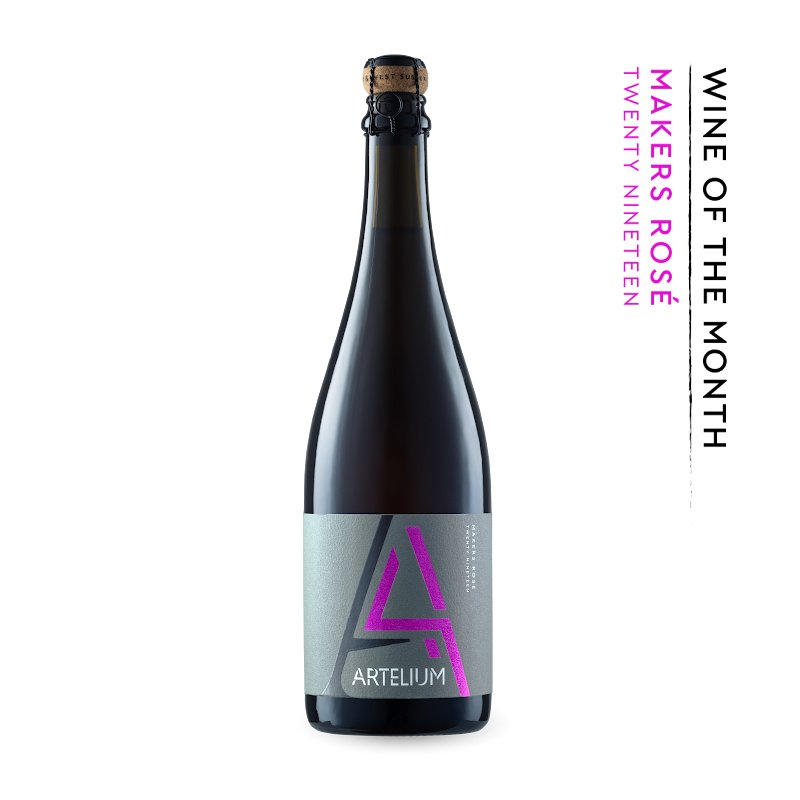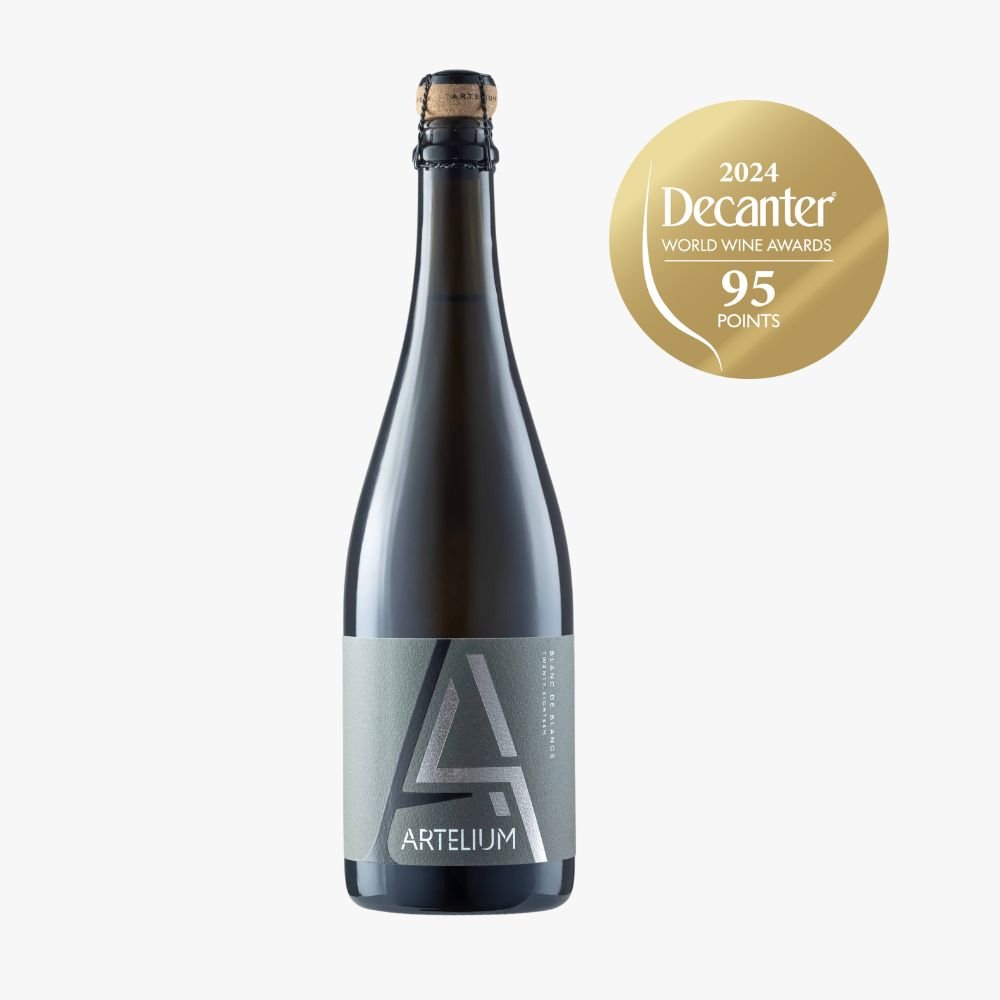What Makes a Sparkling Wine Age-Worthy?
Picking the right time to pop open a bottle of sparkling can be difficult. Too young and you will not get the wine at its peak, too old and it might have lost its vitality. Here we look at the key factors that determine if an English Sparkling wine can age well, and a top tip on how to know when it’s best to drink.
All wines are different. Some can spend years in a bottle, hidden beneath the stairs developing new flavours and aromas, ripening into greater depths of yumminess.
Other wines are fresh, fun and best enjoyed young. When we think of ageing a bottle of wine, we often imagine blowing the dust off a bottle of red. But this is a misconception. All types of wines can be age-worthy: Reds, Whites, Sweet and Sparkling.
DOES ENGLISH SPARKLING WINE AGE WELL?
The short answer is, yes. English Sparkling wines age well. Like all wines, sparklers start life with a set of primary aromas - like bright citrus and fresh red fruits. But over time in the bottle, these will change into tertiary aromas - such as baked fruits, truffle and almond.
The question is, do you want the aromas to shift from primary to tertiary?
UNDERSTANDING ARTELIUM’S ENGLISH SPARKLING WINES
All our wines are made in the Traditional Method. This means we first make a low-alcohol base wine, before starting a second fermentation with sugar and yeast inside the bottle, that produces CO2 and alcohol. Before bottling, the wine then goes through a process called riddling and disgorgement, which removes the spent yeast but keeps the CO2 that gives the wine its sparkle.
Despite years spent in a bottle, when you pop open a sparkling you still want it to be refreshing. In England, we are lucky to have a cool climate and suitable, often chalky, terroir that helps produce fresh and energetic wines, even after time spent in the bottle.
THE ROLE OF ACIDITY IN AGEING ENGLISH SPARKLING WINES
Acidity plays a crucial role in the ageing potential of sparkling wines. For a wine to taste refreshing and to have that delicious, mouthwatering quality, it must have a good level of acidity. Acid also acts as a natural preservative in the wine, helping to maintain its structure and giving it good longevity.
With time spent in the bottle, the acidity in a wine can seem to fade away. So, the wine needs to start with a high level in the first place. Due to the cooler English climate, the acidity in the grapes is naturally high because the grapes do not become over-ripe like they can in warmer parts of the world.
WHAT IS TIME SPENT ‘ON THE LEES’ AND DOES IT IMPACT AGEING POTENTIAL?
When we make our English Sparkling wines, a second fermentation happens in the bottle. A by-product of this is Lees, which is the spent yeast cells that settle in the bottle.
Over time, these cells go through a process of autolysis which imparts new flavours, such as brioche, biscuit or bread-like notes to the wine. The longer that the wine ages on Lees, the more indulgent these flavours become. It also gives a greater fineness to the bubbles.
Our Blanc de Blancs and Makers Rosé 2015 have spent 60 months and 48 months in the cellar ‘on the Lees’ respectively. The winemaker would only choose to age a wine on the Lees for an extended period if it was exceptional. So, not only is time ‘on the Lees’ part of the ageing process, but it also signals that a sparkler has the complexity and concentration to be age-worthy.
TOP TIP! As a rule of thumb, the ageing potential of a wine is between one to three times the length that the wine spent ‘on the Lees’. For example, our Blanc de Blancs 2015 spent five years ‘on the Lees’ and was disgorged in 2020. So, it has the potential to age for five to fifteen years after disgorgement, from 2025 to 2035.
IMPACT OF TERROIR AND VINTAGE ON A SPARKLING WINE’S AGEING POTENTIAL
The environment in which the grapes are grown has a big impact on a sparkling wine’s ability to age, just as it is with still wines.
Firstly, there is a vineyard’s terroir. In Sussex, we are blessed with Chalk soils and a cooler climate that give Sparkling wines higher acidity levels. This forms the backbone of the wine’s structure, which is vital for ageing. Our Blanc de Blancs 2015 was crafted from Chardonnay grown in a single-site Chalk vineyard and will continue to age beautifully for many years to come.
Secondly, the grape-growing environment is impacted by the weather. Across different growing seasons or vintages, the climatic conditions are different. The quality of the vintage – dictated by many factors – plays a crucial role in the final quality of the grapes. And without good grapes, you cannot make exceptional, age-worthy wines!
The 2015 vintage had a frost-free spring and cool summer. A warm October gave the grapes a good hang-time and boosted sugar levels, resulting in excellent grapes. Overall, the year was highly brilliant for sparkling wines, with Chardonnay-based sparklers such as our Blanc de Blancs 2015 showing exceptional ageing potential.
PRACTICAL TIPS FOR AGEING ENGLISH SPARKLING WINES
Steady Temperature Control: Maintain a consistent cellar temperature, ideally between 7-13°C, to prevent premature ageing and ensure a gradual, predictable development.
Avoid Light Exposure: UV rays degrade wine. Shield sparkling wines from light to preserve their delicate characteristics.
Secure Humidity: Keep humidity around 70% to prevent corks from drying out, maintaining a tight seal and safeguarding the effervescence of the wine.
Horizontal Storage: Store sparkling wine bottles horizontally to keep the cork moist, reducing the risk of oxidation and maintaining freshness.




